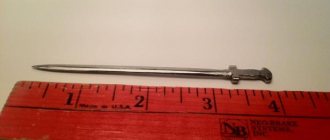The question of how to make fuel briquettes with your own hands has recently arisen among many owners of private houses who want to heat the living spaces of their home using such fuel. The relevance of this issue is also explained by the fact that both compressed sawdust and briquettes made from other types of raw materials (such as straw, reed, tree bark, dry leaves, pine needles, coal dust and fine peat fractions) can be used as such fuel ).
Thus, if you have a device for making briquettes in your arsenal, you can use it to solve two problems at the same time: produce inexpensive but effective fuel for your needs and at the same time dispose of waste. Meanwhile, it should be borne in mind that such fuel will only be inexpensive if the raw materials from which it is planned to be made are obtained by the owner of the briquetting device at a low price.
Homemade briquettes from paper and sawdust
Advantages of pellets over other types of solid fuel
The wide distribution of fuel briquettes, which are also called eurowood and pellets, is due to a whole list of their advantages:
- compact size, which ensures ease of storage and transportation;
- emitting a small amount of smoke and minimal sparking during combustion;
- long burning period (when compared with ordinary firewood, pressed sawdust fuel burns at least twice as long);
- environmentally friendly (compressed from waste materials of natural origin, fuel briquettes do not emit substances harmful to humans and the environment when burned);
- low ash content (the amount of ash formed after complete combustion of pellets does not on average exceed 1% of the total mass of fuel used).
The main advantages of fuel briquettes are long burning and minimum ash
Raw materials used
Fuel briquettes at home, as well as in a manufacturing enterprise, are made from various types of raw materials, which most often include waste of various origins. So, depending on the raw materials used for briquetting, these can be:
- briquettes for burning sawdust;
- straw pellets;
- fuel briquettes made from leaves or pine needles;
- peat briquettes;
- fuel briquettes made of paper or cardboard;
- coal briquettes;
- pellets from wheat, rice and buckwheat husks;
- fuel briquettes, which are made from sunflower husks.
Most often, at home, they organize the production of fuel briquettes from sawdust, since such raw materials are easy to find in the required quantities and are inexpensive. In addition, briquetted fuel made from such raw materials is characterized by fairly high heat transfer, which makes its production and subsequent use financially feasible.
From such a pile of sawdust you can get quite effective fuel
Drying and use
Our homemade fuel briquettes are almost ready - all that remains is to send them to dry in the hot sun. As a result of drying, they will lose maximum moisture, after which they can be stored in any arbitrary order. Please note that, unlike factory products, they will turn out to be light - this is due to the lack of pressure. Now you can try to light the stove with them, using lighter fluid or placing dry paper under the finished fuel briquettes - they will light up much more easily than their factory-made counterparts.
You can improve your home production by purchasing a ready-made factory press and making several molds at once - this will increase productivity and increase the density and calorific value of the fuel you make yourself.
Manufacturing technology
The technology for making fuel briquettes at home practically does not depend on the raw materials used for pressing:
- The raw materials from which it is planned to make fuel briquettes are cleaned of foreign impurities and crushed.
- Clay is added to the crushed raw material mass, which will act as a binder. Instead of clay, you can use wallpaper glue, soaked paper or cardboard as a binding component.
- Water is added to the raw material mass to make it more plastic and pliable for pressing.
- The mixture, consisting of the main raw material, water and a binder, is placed in portions into the matrix cavity, and then pressure is applied to it using a punch connected through a rod to a lever, screw or hydraulic power mechanism. When applying pressure to the raw material mass from which the fuel briquette is formed, it is necessary to ensure that water comes out of it (the more, the better).
- After the fuel briquette is formed, it is removed from the internal cavity of the matrix and dried in the open air to such a state that the humidity of the product does not exceed 13%.
Briquette production technology
To learn in detail how to make fuel briquettes with your own hands, we recommend watching the corresponding video.
Fuel briquettes made of paper ↑
We often have waste paper accumulating in our house, which we don’t know what to do with. Of course, you can sell it for 2 rubles per kg. But this money is unlikely to be enough for you to buy fuel for the winter. But from the same paper you can make excellent fuel in briquettes with your own hands.
The technology for making paper briquettes for fuel is simple, it is well developed and tested. The burning duration of such briquettes is about 2 hours; as for the calorific value, it is even significantly higher than that of coal briquettes. And there is very little residue in the form of ash after combustion - approximately 5% (versus 80% that remains after burning simple newspapers). So, as we see, there are only advantages. Unless it will require time and some of your own labor.
Necessary equipment
As it becomes clear from the technology described above, to produce briquetted fuel you will need appropriate equipment, which is easy to make with your own hands. The main device is a press, which ensures the formation of a briquette from a crumbly raw material mass, characterized by a dense and uniform internal structure. A screw, lever or hydraulic mechanism can be used as a power body, with the help of which a homemade press for the production of fuel briquettes will apply pressure to the raw materials used.
You can independently make a machine for the production of fuel briquettes at home using a simple design scheme, which includes the following components:
- drive mechanism, which, as mentioned above, can be screw, lever or hydraulic;
- a supporting frame on which all structural elements of the device are fixed;
- a matrix in the internal cavity of which a fuel briquette is formed from a loose raw material mass;
- a punch through which pressure is applied to the raw material mass;
- mixing drum (all components included in the raw material mass are mixed in it);
- trays designed for loading raw materials into the matrix and unloading finished products from its working chamber.
Scheme of a homemade impact machine with an electric drive
3D model of the shock-mechanical part of a press for the production of briquettes
To make briquettes from sawdust or any other suitable raw material, one press is not enough: this will also require auxiliary equipment:
- a crusher, with the help of which pre-cleaned raw materials will be crushed to fractions of the required size;
- mesh trays on which the finished briquettes will be dried;
- a ventilation unit necessary to remove the resulting dust from the raw material grinding zone.
Homemade biomass chopper based on an electric drill with a mixer attachment
You can produce Euro firewood yourself not only using screw, lever or hydraulic pressing equipment, but also using other types of technical devices. In particular, it is possible to use briquetting equipment of the impact-mechanical and extrusion type.
Like screw and lever type devices, briquetting equipment operating on the shock-mechanical principle belongs to the category of the least expensive in terms of self-production. When using such equipment, as when using screw and lever type devices, the produced fuel briquettes are not very dense, which makes them not very resistant to high humidity and significantly reduces their heat transfer level. In addition, such briquettes for heating, characterized by a rather loose internal structure, are unstable to mechanical damage, which eliminates the possibility of their transportation over significant distances.
Factory-made press VT60
The technology, which involves the use of extruder-type pressing equipment, is used primarily for the production of Euro-firewood in production conditions. A fuel briquette made using such equipment is characterized by a dense internal structure and, accordingly, high resistance to mechanical damage. When using extruder equipment, the pressure on the pressed raw material is exerted by a screw, which, rotating, moves the bulk mass to the holes of the matrix and pushes it through them. As a result, dense bars of cylindrical or hexagonal shape are formed.
Hydraulic press Green-440 for the production of briquettes RUF
To produce fuel briquettes using an extruder press, you do not need to add binders to the raw material. Such equipment, due to the peculiarities of its design, is capable of providing enormous pressure on the pressed raw materials, as a result of which the natural substance lignin is released from the latter, which acts as a binding component.
If you decide to make this type of pressing equipment with your own hands, keep in mind that this is a rather expensive undertaking, as it requires the use of expensive materials and special devices. That is why the option of independently manufacturing extruder-type pressing equipment is not often considered by home craftsmen.
Production
To produce briquetted fuel for heating a summer house or garden house, you will need crushed waste and clay. They are mixed in a ratio of 10:1, adding water little by little until a paste-like mass is obtained.
The quality of combustion will depend on how evenly the initial components are mixed, so mixing is best done using a household construction mixer (concrete mixer).
Using special equipment for the production of small batches, it is necessary to make a cellular form. For trial batches, the mold can be put together from boards. The size of the cells is chosen arbitrarily, based on the desired form of briquettes.
Some summer residents press the mixture in old pots, boxes and other unnecessary household containers. However, a rectangular shape is preferable since rectangular fuel blocks are easier to store.
The wet mass is placed into the cells of the mold and compacted. The quality of homemade fuel depends on the degree of compaction.
To prevent the briquettes from crumbling and falling apart in your hands, it is advisable to lay several layers of newsprint on the bottom of the mold (or under the mold when using cells without a bottom).
Drying is done naturally in air. On sunny summer days, this process does not take much time. After removing the briquettes from the mold, they are placed under a canopy, in a stack with gaps, where they are dried in a draft.











